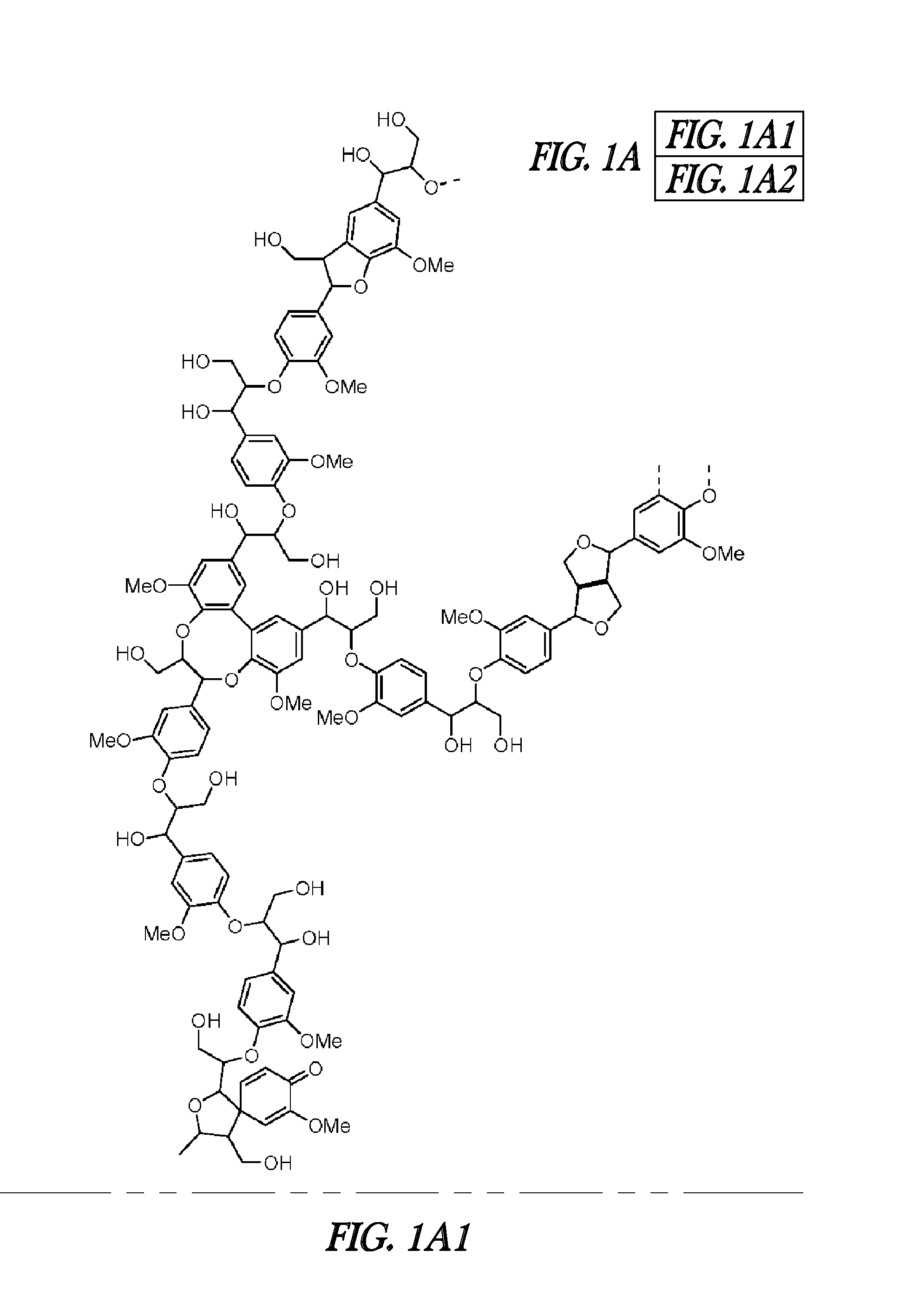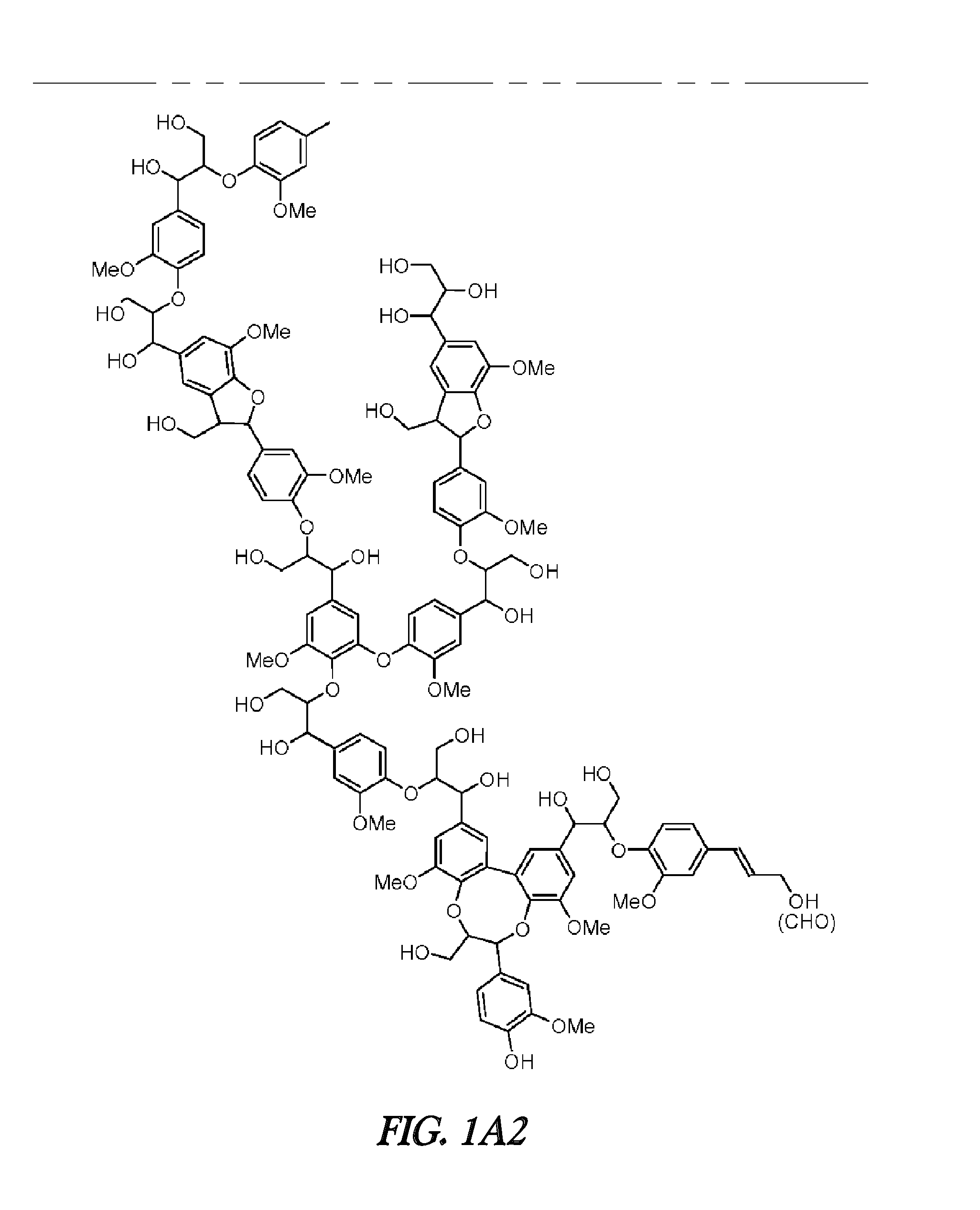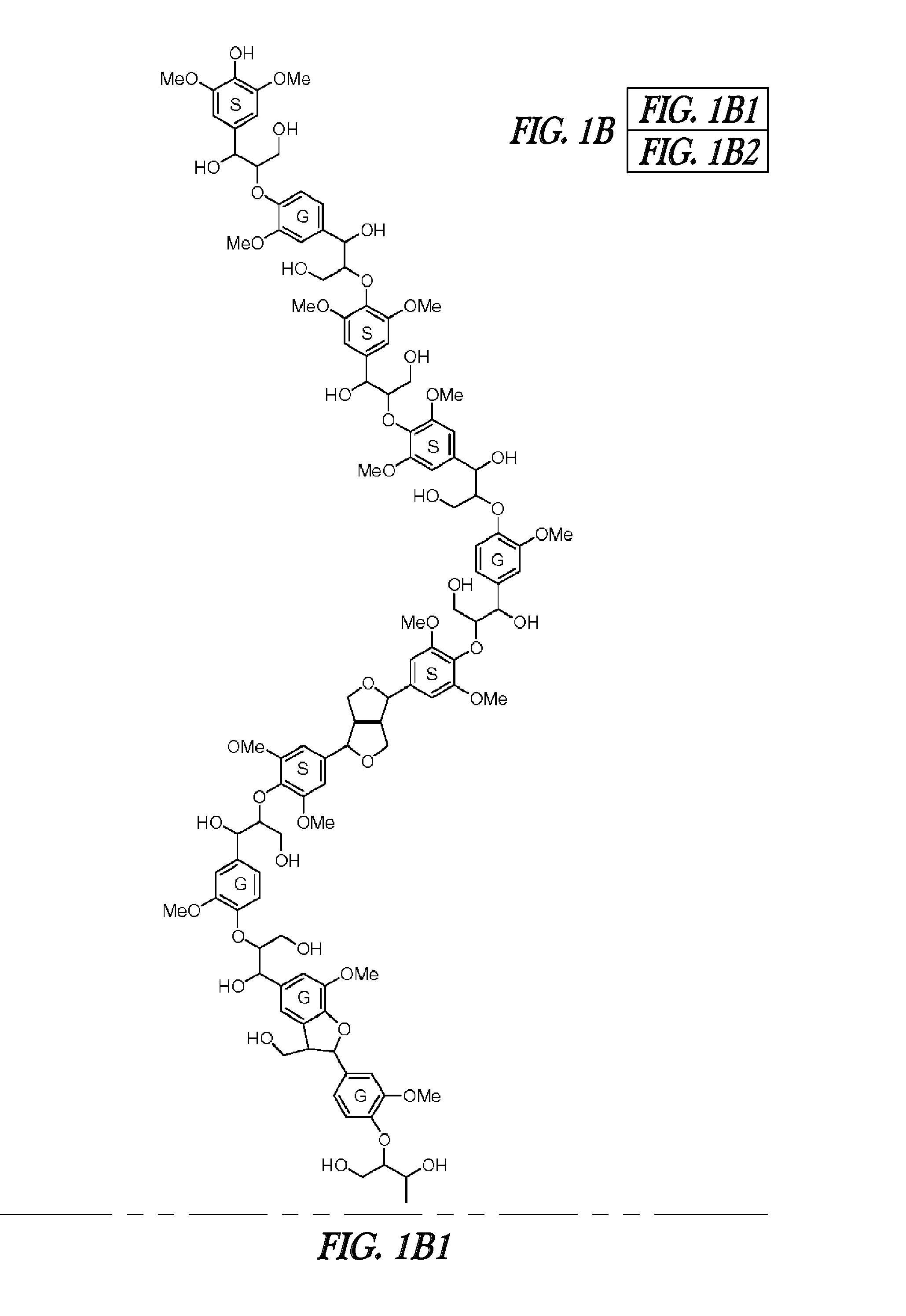Hibiscus cannabinus feruloyl-coa:monolignol transferase
a technology of hibiscus cannabinus feruloylcoa and monolignol, which is applied in the field of identification and isolation of new acyltransferase nucleic acids and polypeptides, can solve the problem of difficult task of producing paper and biofuels from plant cell walls
- Summary
- Abstract
- Description
- Claims
- Application Information
AI Technical Summary
Benefits of technology
Problems solved by technology
Method used
Image
Examples
example 1
Materials and Methods
[0161]This Example illustrates some methods that can be employed to make and use the invention.
Angelica sinensis Tissue Collection and Total RNA Extraction
[0162]One- and two-year-old field grown Angelica sinensis plants (Mountain Gardens Herbs), were transplanted into Readi-Earth and grown for two months in a greenhouse to recover. The single root of a two-year plant was harvested, cut into small pieces, and ground in liquid nitrogen to a fine powder. Total RNA was extracted by adding 100 mg of powdered Angelica sinensis root tissue to 1 ml Trizol buffer (Invitrogen) and incubating for 15 minutes while vortexing at room temperature. One-fifth volume of chloroform was added and incubated for an additional 15 minutes. After centrifugation at 15000×g for 35 minutes at 4° C., the aqueous phase was extracted with ⅕ volume of chloroform. Total RNA was precipitated from the aqueous phase by adding ⅕ volume of a solution containing 1 M sodium chloride and 0.8 M sodium c...
example 2
Identification and Cloning of a Feruloyl-CoA:monolignol Transferase
[0182]Mature A. sinensis plants were purchased from Mountains, Gardens and Herbs (North Carolina) and RNA was extracted from the roots of these plants. This RNA was used to synthesize double-stranded cDNA. The cDNA was sequenced using a Roche GSFLX Titanium Sequencer and 736,017 sequences were obtained. The sequences were assembled into 62425 contigs using CAP3 (Huang, X., A contig assembly program based on sensitive detection of fragment overlaps. (1992) Genomics 14: 18-25). The consensus sequence for each contig was searched against all proteins from Arabidopsis and the NCBI non-redundant protein databases using the BLASTX software program (Altschul S, Gish W, Miller W, Myers E, Lipman D. Basic local alignment search tool. (1990) J Mol Biol 215(3), 403-410). The sequences were sorted by abundance and filtered to show only sequences annotated as being within a “transferase family,” which is the annotation in the TAI...
example 3
Analysis of Transgenic Poplar Containing the FMT Sequence
[0187]This Example illustrates the expression and enzymatic activity observed in poplar trees that were genetically modified to express the Angelica sinensis feruloyl-CoA:monolignol transferase nucleic acids described herein.
Methods
[0188]Hybrid poplar (Populus alba×grandidentata) was transformed using Agrobacterium tumefaciens EHA105 employing a common leaf disk inoculation. Two constructs were created to drive the expression of FMT in poplar: 1) 35S::YFP-FMT (cauliflower mosaic virus ubiquitous 35S promoter with an N-terminal tagged Yellow Fluorescent Protein), and 2) CesA8::YFP-FMT (poplar xylem-specific secondary cell wall specific cellulose synthase 8 promoter with an N-terminal tagged Yellow Fluorescent Protein). The binary plasmids were inserted into EHA105 using the freeze-thaw technique, and incubated overnight in liquid Woody Plant Media (WPM) supplemented with 100 μM acetosyringone. Leaf disks were cut and co-culture...
PUM
| Property | Measurement | Unit |
|---|---|---|
| temperature | aaaaa | aaaaa |
| temperature | aaaaa | aaaaa |
| pH | aaaaa | aaaaa |
Abstract
Description
Claims
Application Information
 Login to View More
Login to View More - R&D
- Intellectual Property
- Life Sciences
- Materials
- Tech Scout
- Unparalleled Data Quality
- Higher Quality Content
- 60% Fewer Hallucinations
Browse by: Latest US Patents, China's latest patents, Technical Efficacy Thesaurus, Application Domain, Technology Topic, Popular Technical Reports.
© 2025 PatSnap. All rights reserved.Legal|Privacy policy|Modern Slavery Act Transparency Statement|Sitemap|About US| Contact US: help@patsnap.com



